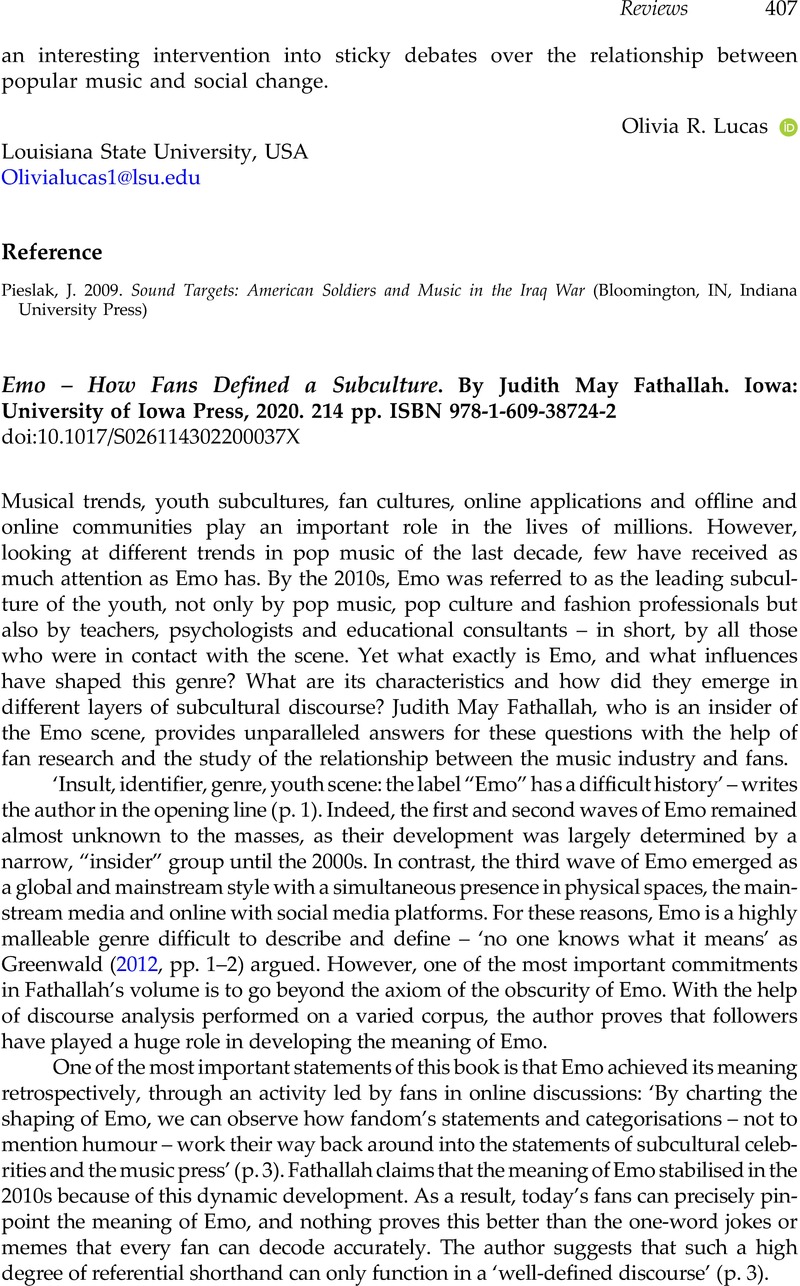No CrossRef data available.
Article contents
Emo – How Fans Defined a Subculture. By Judith May Fathallah. Iowa: University of Iowa Press, 2020. 214 pp. ISBN 978-1-609-38724-2
Review products
Emo – How Fans Defined a Subculture. By Judith May Fathallah. Iowa: University of Iowa Press, 2020. 214 pp. ISBN 978-1-609-38724-2
Published online by Cambridge University Press: 20 September 2022
Abstract
An abstract is not available for this content so a preview has been provided. Please use the Get access link above for information on how to access this content.

- Type
- Review
- Information
- Popular Music , Volume 41 , Special Issue 3: Popular Music and Populism , October 2022 , pp. 407 - 409
- Copyright
- Copyright © The Author(s), 2022. Published by Cambridge University Press
References
Foucault, M. 1971. ‘The discourse on language’, Social Science Information, 10/2, pp. 7–30CrossRefGoogle Scholar
Greenwald, A. 2012. Nothing Feels Good: Punk Rock, Teenagers, and Emo (New York, St Martin's Press)Google Scholar
McRobbie, A. 1980. ‘Settling accounts with subculture. A feminist critique’, Screen Education, 34, pp. 37–49Google Scholar
Milner, R.M., and Phillips, W. 2017. The Ambivalent Internet: Mischief, Oddity and Antagonism Online (Cambridge, Polity)Google Scholar
Phillips, W. 2015. This Is Why We Can't Have Nice Things: Mapping the Relationship between Online Trolling and Mainstream Culture (Cambridge, MA, MIT Press)CrossRefGoogle Scholar





